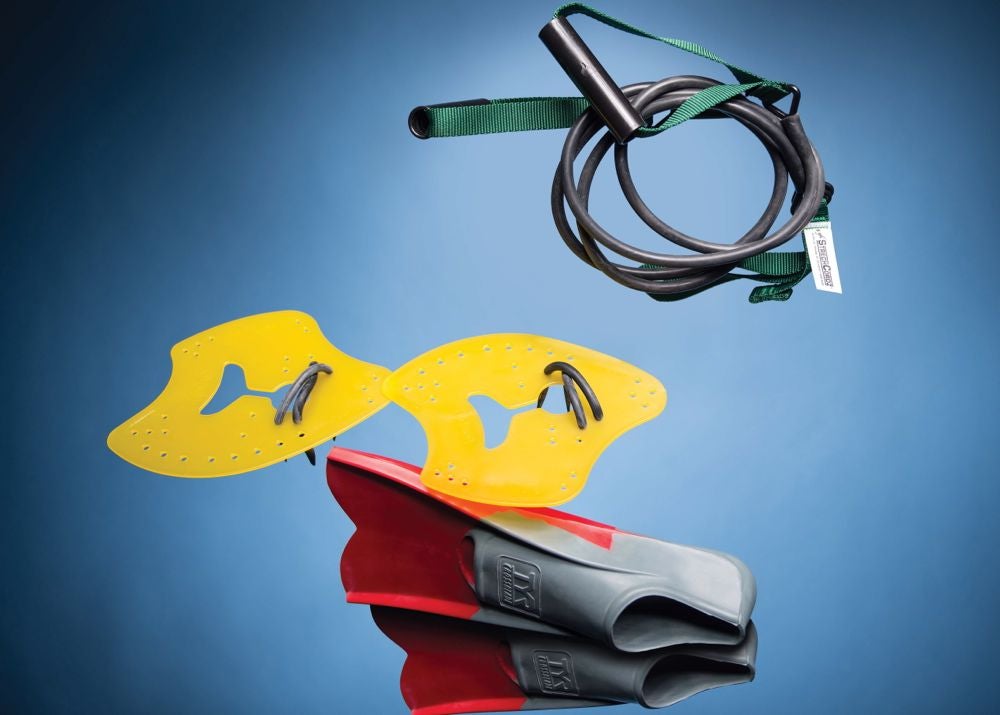Swim Gear For Triathlon: Tips From Andy Potts And Julie Dibens

Photo: Nils Nilsen
Two of the fastest swimmers in the sport of triathlon—Andy Potts and Julie Dibens—share the tools you should use to maximize your training time.
Paddles
Benefit: Challenge your strength and improve the catch
More resistance doesn’t necessarily equal a better strength workout. “A lot of us don’t have the swim-specific strength to use big paddles and end up muscling through the water rather than swimming with efficient technique,” says Dibens. Even she begins the season with small paddles, Tyr Catalyst Brites ($17.49, Tyr.com). “Once you master the smallest paddles and feel like you are swimming normally, then step up to the next size.”
RELATED: Find The Right Swim Paddles For You
Resistance bands
Benefit: Injury prevention and dry-land warm-up
Swimming more yards is helpful, but dry-land strength training is a necessary component that can make your shoulders more powerful and resilient. “Resistance cords are great for adding strength,” Potts says. A few quick minutes of the stabilizer muscle exercises shown at Triathlete.com/cords can help keep your shoulders healthy through a big block of swimming. Potts uses Stretchcordz ($40.65, Nzmfg.com) for strength training and to warm up before a race when athletes aren’t allowed to warm up in the water.
RELATED: Shoulder Exercises For A Stronger Swim
Fins
Benefit: Refine streamline posture and increase ankle flexibility
Fins do more than power you through the water. “They also teach the correct body position to swim fast,” Dibens says. Propelling the swimmer through the water at a faster than normal speed creates more water resistance, giving your body the opportunity to search for a more efficient streamline. Potts recommends the Tyr CrossBlade fins ($32, Tyr.com) because of their size. “Fins that are too long can goof with your stroke and timing, and these short ones give you added propulsion without compromising your kicking motion,” he says.
RELATED – Coach Debate: How Often Should Swim Tools Be Used?